Reviews
Willard Huyck
USA, 1986
Credits
Review by Evan Kindley
Posted on 14 June 2013
Source Amazon Instant Video
Categories Failed Franchises
Let’s begin at the end: A duck is being fêted. An all-female band is on stage before a crowd of screaming fans performing a bad Prince knock-off (co-written by Thomas Dolby and George Clinton) called “Howard the Duck.” The duck himself, who is also the band’s manager, is roughly Danny DeVito-sized, and dressed nattily in a suit and tie. (By this point, we’ve seen him don a variety of outfits: a sweater vest, suspenders, wool slacks, and long necktie; a red Ohio State sweatshirt; a tartan bathrobe; and - my favorite - a neon bowling jersey, camouflage pants, striped scarf, and bolo tie.) Through a series of technical mishaps, he ends up on stage as well, where he is handed an electric guitar upon which he starts shredding. He even plays with his beak, à la Jimi Hendrix, and delights the crowd - who, by the end, are chanting “Howard! Howard! Howard!” - with a Chuck Berry-style duck walk. “Not bad for a duck from outer space,” he humblebrags as the band’s frontwoman embraces him backstage.
Actually, yeah: pretty bad. Produced by George Lucas and directed by his film school classmate Willard Huyck, Howard the Duck cost $36 million and reportedly provoked fistfights between Universal executives over who originally green-lit the project. Though it would be execrable in any era, Huyck’s film is arguably slightly ahead of its time. Inspired by Steve Gerber’s cult 1970s Marvel Comics character, Howard the Duck - which, somewhat amazingly, was the first feature-length movie based on a Marvel character since the 1940s - attempts to channel the transgressive, satirical spirit of R. Crumb and Ralph Bakshi’s Fritz the Cat into a mainstream adventure comedy. Howard, like Fritz, is a foul-mouthed cartoon “funny animal” (clearly descended from Carl Barks’ Scrooge McDuck) who continually finds himself in racy situations. Today, that basic idea has been taken to the bank and converted to stock options by Seth MacFarlane’s Ted, and if Huyck and Lucas had been willing to push the envelope a little further, they might have earned a place in that dubious lineage.
But Howard the Duck, creepy as it is, is a hard PG at best. Mysteriously beamed to Earth from his home planet Duckworld, Howard crash-lands in mid-80s Cleveland, an “urban jungle” full of unfriendly minorities and marauding New Wavers. Indeed, he’s immediately set upon by a gang of the latter, who pull him into a rock club where a Go Gos-esque band called Cherry Bomb, fronted by Beverly Switzler (Lea Thompson), is performing.1 At first Howard mostly just wants to get away without being fricasseed, but his inherent chivalry is awakened when he witnesses Beverly’s attempted rape by the same ne’er-do-wells. “No more Mr. Nice Duck!” Howard shouts, and demonstrates his mastery of Quack Fu.2 “I’ve been doing too much toot!” one of the rapists shrieks in response: one of my two favorite lines in the film. (The other occurs when Howard overhears Cherry Bomb’s unscrupulous manager planning to molest “bodacious Beverly”: “Gonna invite her up to my place for a little… career manipulation.”)
The exact nature of the Howard-Beverly relationship is left oblique. In the comic book it’s mostly Platonic, though Beverly is occasionally described as Howard’s “girlfriend,” and he clearly has amorous urges toward human women. In the film, too, Howard states that he has “developed a greater appreciation for the female version of the human anatomy” just before jumping into bed and fooling around with a scantily dressed Beverly. “I just can’t resist your intense animal magnetism,” she tells him, making the feathers on top of his head stand erect. Yet the prospect of actually consummating his flirtation with Beverly clearly freaks Howard out: once she comes on strong he immediately starts backpedaling, and she finally admits she was only kidding before they are thankfully interrupted. This scene is, to be generous, confusing: I guess it’s supposed to be comic, but watching Lea Thompson and a foam latex-clad dwarf eyefuck one another is virtually no one’s idea of fun, and it’s especially hard to imagine what the movie’s target audience of children and pre-teens were supposed to make of it all. (I dimly remember feeling mortified.)3
Let’s pass quickly, as the movie does, from this unsettling moment to the film’s second half, in which a fairly conventional sci-fi plot kicks in involving Jeffrey Jones as Dr. Walter Jenning, inventor of the laser spectrascope that has accidentally imported Howard to Earth. In an attempt to send him back to Duckworld, Jenning attracts another alien - one of “the dark overlords of the universe” - who promptly takes control of his body, a warm-up for his much more distinguished possession in Tim Burton’s Beetlejuice. From here on out, Howard the Duck drifts away from its initial tone and premise (which, however flawed, are at least unique) and becomes sub-Zemeckian dreck, equal parts E.T. and Invasion of the Body Snatchers. This plot line features some of the movie’s most impressive special effects (created by Industrial Light & Magic, naturally) and lamest duck wordplay (“No duck is an island” is somewhat clever, I guess, but the battle cry “Prepare to eat beak!” just makes no sense at all). This might be a good time to note the presence of Tim Robbins as Howard’s nerdy scientist sidekick Phil Blumburtt, who I had misremembered as Beverly’s love interest but who in fact serves virtually no narrative function. (He does, however, have my third favorite line, when he describes his gig as a lab assistant “just a temporary job until I finish school and get my own museum.”)
Could Howard the Duck have worked? Much ink has been spilt on Howard’s unpleasantly artificial appearance, which is only slightly less repellent than that of the title characters in the following year’s Garbage Pail Kids Movie. Perhaps, if the film had been animated, as Huyck and Lucas originally intended, and made with a much smaller budget, in a spirit closer to Gerber’s original creation. (The comic’s mix of obscenity, absurdity, and playful cuteness would probably fit in well on Adult Swim nowadays.) But the project was a victim of its creators’ previous success: it was produced and marketed not as a cult oddity but as the blockbuster follow-up to Return of the Jedi and Indiana Jones and the Temple of Doom (which Huyck co-wrote), and all bets were accordingly hedged. Towards the end of the film, Howard magnanimously decides to destroy the laser spectrascope, thus forever closing the portal to his planet along with the dark overlords’, but opening the door to potential sequels. “Goodbye, Duckworld!” he cries, making the ultimate sacrifice—for naught, as it turns out. Howard, we hardly knew ye.
- The Go-Gos’ Belinda Carlisle in fact auditioned for the part of Beverly. ↩
- Most of the film’s punchlines include the words “duck” or “quack.” When they want to mix it up, they go for “egg.” ↩
- For those who are interested in experiencing only the most uncomfortable scenes in the film, here’s a helpful YouTube compilation of the Top 10 Most Disturbing Howard the Duck Moments. ↩
More Failed Franchises
-
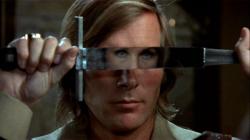
Captain Kronos - Vampire Hunter
1974 -
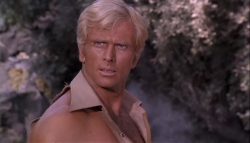
Doc Savage: Man of Bronze
1975 -
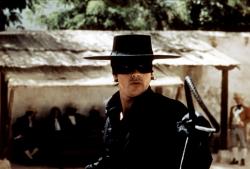
Zorro
1975 -
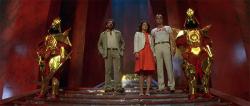
Flash Gordon
1980 -
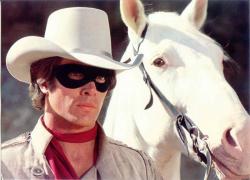
The Legend of the Lone Ranger
1981 -
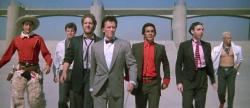
The Adventures of Buckaroo Banzai Across the 8th Dimension!
1984 -
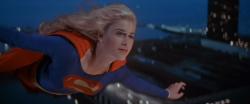
Supergirl
1984 -

Dune
1984 -
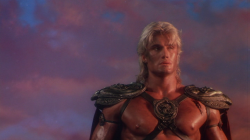
Masters of the Universe
1987 -
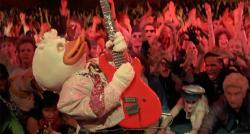
Howard the Duck
1986 -

Willow
1988 -
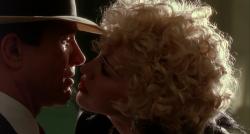
Dick Tracy
1990 -
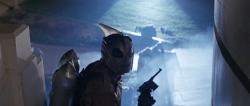
The Rocketeer
1991 -
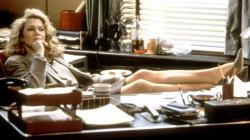
V.I. Warshawski
1991 -
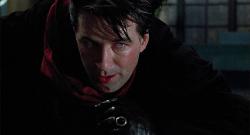
The Shadow
1994 -
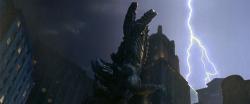
Godzilla
1998 -

The Zero Effect
1998 -
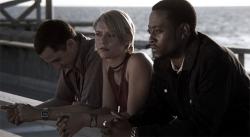
The Mod Squad
1999 -

Hulk
2003 -
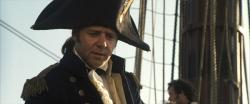
Master and Commander: The Far Side of the World
2003 -
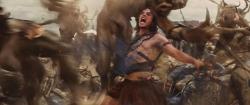
John Carter
2012
We don’t do comments anymore, but you may contact us here or find us on Twitter or Facebook.



